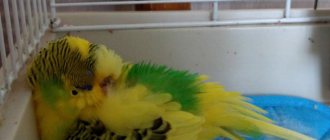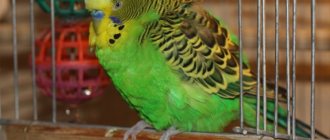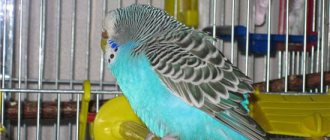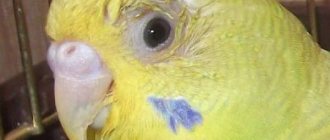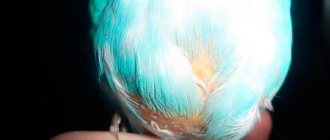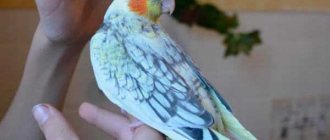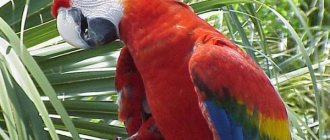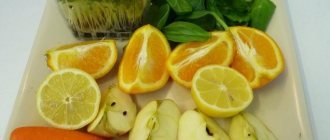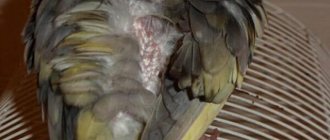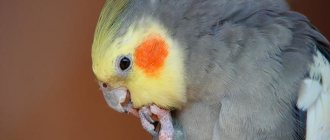The metabolism of birds is accelerated several times compared to humans. Therefore, only a few days may pass from the first symptoms of the disease to a serious condition and even death of the pet. However, as in mammals, the appearance of excrement has important diagnostic significance. It is important to understand what kind of droppings a parrot should have and take timely measures if the texture and color changes.
Causes
Malfunctions of the digestive system cause stomach upsets. There may be several reasons for its appearance:
- stale food;
- violation of hygiene rules;
- lack of millet in the diet;
- infectious diseases;
- drafts.
First you need to figure out the quality of the feed, pour boiling water over the feeder and drinking bowl. Check whether your pet regularly receives millet with food. If these measures turn out to be useless, the reason must be sought elsewhere.
The inclusion of juicy fruits in a bird’s diet leads to stool upset. There is no need to worry: everything will soon return to normal.
On a note. If the bird drinks only boiled water and not bottled water, loose stools may appear, since in this case it consumes more liquid than required.
Stress
Stress is a cause of indigestion in cockatiels. It is difficult for a parrot to change its place of residence and owner. In this case, not only the mental state deteriorates, but also the physical one. Experiences cause increased intestinal motility, causing diarrhea in the cockatiel. Moving is not the only cause of illness in a cockatiel: fright can also cause a deterioration in its physical condition.
Possible causes of stress and, as a result, digestive disorders in a parrot:
- loud music, TV that stays on for days, a vacuum cleaner, loud speech and screams;
- other pets – cats or dogs;
- small children screaming and shaking the bird's cage;
- a new neighbor can frighten and upset the bird, especially if the newcomer is aggressive and takes food and toys from the old-timer. This will cause stress and diarrhea.
All these factors affect the psyche of the bird and provoke the development of diseases.
Poisoning
Corella is a curious bird; it tries to taste everything. There should be no poisonous plants, medicines or household chemicals in the public domain in the house. Food from the owner's table is unsuitable for feeding parrots and can cause diarrhea in the cockatiel.
Infections and viruses
A parrot can become infected with ornithosis, tuberculosis, or Pacheco's disease from a new neighbor. When purchasing a pair for your pet, you must quarantine the new bird. She should be kept in a separate cage for a month until the owner is sure that everything is in order.
A cold can become a catalyst for the development of avian diarrhea. If the temperature regime is not observed, the air in the room cools to +20 °C and below, the birdcage is in a draft, and the bird catches a cold. At the first signs of the disease, indigestion will appear.
Why does a parrot eat its own droppings?
Many people have probably noticed that pet parrots peck their droppings. How to relate to this phenomenon, is it normal? According to ornithologists, there are several reasons for this behavior:
- Increased interest in the world around you. Most often this applies to young birds. In the process of learning, they perform incomprehensible actions, taste everything they see. This usually goes away with age.
- If an adult eats the droppings, perhaps this is an instinct. When there is a lack of minerals, the body gives a signal, and the bird begins to replenish the deficiency of vitamins and microelements in any convenient way. There is no danger here, but you need to correct the eating habit by adding additional food to the parrot’s diet.
- Lack of particulate matter necessary for digestion. In the crop, the grains are ground with the help of pebbles and grains of sand. The parrot may search for hard material in piles as if it were eating excrement.
Eating droppings is not as scary as many people think. In nature, coprophagia is common. Wild parrots swallow the feces of their relatives, and at home they have to pick through their own waste.
Every breeder can easily carry out a superficial analysis of the litter by appearance. Only by understanding the characteristics of life can one diagnose a disease or deviation from the norm at an early stage.
Symptoms
The owner may mistake an increase in the amount of urine in the droppings for diarrhea, but this is not the case. This phenomenon is called polyuria - a temporary disorder of the digestive system due to changes in food, poor-quality water, and egg laying.
If your cockatiel has severe diarrhea and starts vomiting, you need to check for the following signs:
- the tummy and cloaca area become contaminated with liquid droppings;
- stool has an unpleasant odor;
- droppings may include blood, mucus, or foam.
If your pet is increasingly sitting at the bottom of the cage, his plumage is dirty, and he is sleepy and lethargic, with loose stools and vomiting, he is seriously ill. This condition requires consultation with a doctor and treatment; it is important to determine the cause of the ailment.
What kind of litter should a budgie have normally?
The parrot's body is designed in such a way that its excretory system removes both feces and urine at the same time. A small budgerigar digests food quickly, and has 30-50 bowel movements per day. Observing such a picture, the owner wonders whether everything is in order and what kind of litter the budgerigar should have if it is healthy.
Normal state of excrement:
- feces in the form of a greenish or brown curl;
- clear liquid - urine;
- urates are white or beige in color.
are in normal condition.
The consistency of the droppings depends on the food that the parrot consumes. If he eats mostly grain mixture and porridge, the litter will be dense. The predominance of succulent food (fruits, greens) causes polyuria - increased urine production. When the bird is healthy, the functions of the organs are not impaired, and it has normal discharge.
Attention! You should be wary of changes in the color and quantity of stool, the volume of moisture - any deviations from the pet’s normal condition.
What to do first
Digestive system disorders can be caused by poor quality food. It is necessary to exclude it from the diet, and in the future purchase a grain mixture from trusted manufacturers without seeds. The feeder and drinker are first treated with boiling water.
Poor hygiene leads to diseases in the cockatiel parrot. It is necessary to thoroughly wash and treat with antiseptics all objects with which the bird most often comes into contact.
Poor quality water in most cases of the disease causes diarrhea. You can give your parrot clean bottled water without gas. The bird drinks more boiled water than it needs, and this causes diarrhea in the cockatiel.
Until complete recovery, exclude greens, fruits, and vegetables from the bird’s diet. Fruits with juicy pulp and an abundance of fiber stimulate intestinal motility, causing loose stools to appear.
You need to carefully study your house plants: perhaps some of them are poisonous to your pet.
Remove the parrot's cage from possible sources of draft and noise - the bird does not need stressful situations.
Antibiotic therapy, parasites, inflammation of the goiter, and lack of vitamin D can cause diarrhea in cockatiels. These factors must also be excluded.
Before visiting the veterinary hospital, the bird must be washed, especially the cloaca area. Pour a weak solution of chamomile into the drinking bowl.
The bird can be fed liquid food ground and mixed with water through a syringe. If the pet eats from the feeder, the grain is first sprinkled with half a Karsila tablet.
If the bird is hunched over or shivering, you need to turn on the lamp so that it can warm up under it.
On a note. The bird can be heated if the stool is clean and free of blood.
To stop your cockatiel's diarrhea, you need to feed it cooked rice. A decoction of St. John's wort also has a fixing effect.
Calcium deficiency causes diarrhea in parrots. You can grind pharmaceutical tablets and add a little to the food. Or you can wash the egg thoroughly, remove the shell and grind it into powder. This feed additive will solve the problem of calcium deficiency.
Breeding
The optimal conditions for mating of domestic parrots are:
- humidity up to 70%;
- maintaining the ambient temperature within 23–25 degrees.
As practice shows, the combination of these conditions creates a comfortable breeding environment for cockatiels. After molting (a period of short daylight hours), the birds are transferred to a mode of gradually increasing the daily amount of illumination. To do this, use artificial lighting.
If the owner observes moderation and gradually increases daylight hours, the parrots' sex glands become more active.
Important! With poor ventilation or insufficient humidity, parrot embryos die.
Pairing
The number of intimate acts for each couple ranges from 1 to several times per day. Mating of cockatiels lasts 1–2 weeks.
If the female begins to pluck feathers on her belly, it means that she will soon lay eggs. Just before the laying, the expectant mother begins to breathe rapidly and roll her eyes.
Hatching and emergence of chicks
A female cockatiel lays 3–5 eggs. The process lasts several days, 1–2 eggs are added to the nest every day.
Important! If a cockatiel that is brooding has more than 5 eggs, the extra babies may not survive due to lack of warmth. In this case, it is necessary to place 1–2 eggs with other females.
Corellas incubate their clutches together. The female turns the eggs twice a day to ensure even heating. The movements of the embryos help them not to stick to the shell.
Corellas hatch eggs for about 3 weeks, incubation can last up to 23 days. Before the appearance of the first parrot, the female cockatiel sits on her eggs for several hours, and her husband brings her food in his beak.
Hatching of the chicks lasts 3–4 days, accompanied by fussing with shells, squeaking and the fuss of the spouses. If the female is warming testicles that have been in the nest for 4 weeks, they should be removed. Most likely, the embryos inside them have already died.
Caring for chicks
The food for newborn cockatiel babies is crop milk. This thick and nutritious substance has a whitish tint. Parents bring it to the chicks in their beaks.
After a week, the parrots begin to eat solid food - semi-digested grains. After another 14–15 days, the chicks begin to develop down and partially feathers. The inside of the nest becomes a little crowded, and the parents return to the cage. The kids stay in the house and begin to learn how to climb onto the perches.
At one and a half months of age, the chicks try to fly and leave their home. Young parrots often fall, so the house should not be placed too high. Parents feed the chicks until they are two months old. After this, the young parrots can be removed.
It happens that adult cockatiels do not want to care for the children or begin to pinch their fluff, which causes significant damage to the fragile chicks. The owner of the birds must remove such parents and take care of the young parrots.
Birds raised by humans become completely tame and are easily trained, but they cannot reproduce.
Drug treatment
At the first signs of digestive upset, adsorbents can be added to poultry feed. Smecta, Filtrum, Enterosgel cope well with pathogenic microflora and stop diarrhea. Regular activated carbon will also help. You need to take 1 tablet, crush it, add half of the powder to water, and the second to the food with a small amount of liquid.
Also, diarrhea in cockatiels is treated with the immunomodulator Gamavit. It is added 0.5 ml per 2 tbsp. l. drinking water. You can drop 5 drops into the beak. Treatment is continued for a week.
Dry bacteria can treat indigestion in birds. The veterinary drug Vetom is given 2 times a day, adding 1 drop to the drinker. The course of treatment is a week. You can add the contents of a Linex capsule to your drink until your condition improves, but not more than 7 days.
Why does droppings stick to a parrot's butt?
If the droppings remain under the parrot's tail, we are talking about a dense consistency of excrement, indicating digestive disorders and dehydration of the bird. Diseases associated with the condition:
- goiter inflammation;
- infectious diseases that provoke dehydration;
- constipation is a rare phenomenon in birds and is associated with poor food.
Some professional breeders recommend washing the feathers under the tail yourself, giving an enema and pouring liquid into the beak. But the best solution would still be to go to the veterinarian if there is any suspicious change in the parrot’s excrement.
Why does diarrhea occur?
When the process of digesting food in the cockatiel's stomach fails, it begins to experience frequent liquid discharge from the intestines. This phenomenon is called diarrhea. Let's figure out what could be causing it.
Due to the influence of external and internal irritants, the rate of contractions of the intestinal walls increases. This helps the contents of the bird's stomach begin to move faster through the intestines. Because of this, gastric fluid does not have time to dissolve and comes out along with poorly digested food.
However, passing water along with droppings does not always mean diarrhea. After all, in birds both droppings and urine come out at the same time. As a result, normal bird stool looks like several formed oblong pieces of feces in a puddle of urine. In a healthy parrot, the color of the droppings depends on the color of the food he ate. It is mostly either green or brown.
When the droppings come out as one continuous liquid or mushy mass, it means that the cockatiel has started to have diarrhea. Its color may be green or gray, sometimes with the addition of blood clots. Another obvious sign of diarrhea is an inflamed cloaca with dirty plumage around it.
Budgerigar spits and spits out food
From: Nikolay
> Tel.: +7 902 13*******
Message: Hello! Please tell me about the question. I have two budgies. Three days ago I noticed the second (blue) one was in poor condition. He got ruffled. Almost always asleep. Sometimes he drinks and eats a little. But he noticed that he was eating food through force. After eating, he seems to spit it out almost immediately when he returns to the perch, as if vomiting. Diarrhea with water. The parrot itself is lethargic and closes its eyes. I'm sorry that due to the recent heating shutdown, the room was cool, because... The temperature outside was very cool and the drop was sharp. The food has been eaten for a long time, the water is changing. There is a cockatiel mineral stone in the cage. Suspicion of goiter inflammation. Tell me what could be and what can be done. I am writing to you from the Murmansk region. We don't have any veterinarians for googai. Thank you in advance.
How to find out gender
There are several external signs by which you can distinguish a male cockatiel from a female.
By the crest
The shape of the crest is slightly different in males and females. In males it is wide at the base, then curves and tapers. Females have a straight and more luxuriant crest.
By body structure
Females have a more rounded body shape and they look somewhat “heavy”. The structural features of the pelvic bones do not allow the girl to place her paws close when walking or sitting. That's why she sits low and walks waddling like a duck.
The shape of the tail is also different. In males it is wedge-shaped and pointed, and in females it is shaped like a spatula. The male always looks brighter and more attractive than the female.
By color
It should be remembered that this feature can be used to distinguish the sex of only sufficiently mature birds that have reached at least 6 months of age. The body color of the male is dark gray, with almost black flight and tail feathers, a yellow head and iris.
Females have a dirty gray body, almost brown underneath. The color of the head, crest and cheeks of girls is paler. Females have pale yellow spots on the undersides of their wings, and their tail feathers have distinctive yellow stripes at the bottom. Males do not have these traits.
By behavior
The method requires quite a lot of observation, but is very accurate. The behavior of boys and girls cockatiels is strikingly different.
Males are much more active, sing well, learn speech and speak better. They actively tap their beaks on various objects and fold their wings into a heart shape. Due to the peculiarities of their behavior, males make contact with the owner more easily and become tamed faster.
Females are calmer in nature. They don't sing well. In fact, their singing turns into monotonous screams. Due to the worse development of the vocal cords, it is difficult to learn speech. They are less amenable to taming. In the early stages of adaptation, they become restless, scream and can show aggression when the owner puts his hand towards them.
Using a DNA test
The most reliable way to find out the answer with an accuracy of 99.9%. It's not free. The owner needs to deliver the bird to a special laboratory and pay for the services of specialists. Unfortunately, this method is available only to residents of large cities, since in small urban settlements and especially in rural settlements there are simply no such laboratories.
A very significant advantage is the fact that you do not have to wait until external signs characteristic of gender appear on the bird’s body, or until behavioral patterns characteristic of males or females appear in the bird’s lifestyle. You can take a barely fledged chick to the laboratory. This is very convenient for those who raise chicks for sale and are not interested in deceiving buyers. And this will make the choice much easier for the buyers themselves. They will not have to determine their gender themselves.
The issues of determining the age and sex of cockatiels are the most important ones that the buyer must decide. The final decision should depend on the answers to them - whether it is worth purchasing a specific bird or whether it is better to take a closer look at another. It is extremely necessary to exercise maximum care when inspecting birds intended for purchase.
Previous
CorellaTaming, care and maintenance of the Corella parrot
Reaction to a stressful situation
Sometimes a bird’s deep experiences significantly affect its appetite. A stressful situation in a parrot can arise due to:
- Moving. You still need to get used to the new apartment where the owners have moved. Gluttony is the easiest way to get used to change.
- New cell, or different hosts. Also a reason to worry.
- There are many dogs and/or cats in the house. If the parrot was purchased recently, predatory animals can cause panic and an excessive appetite.
